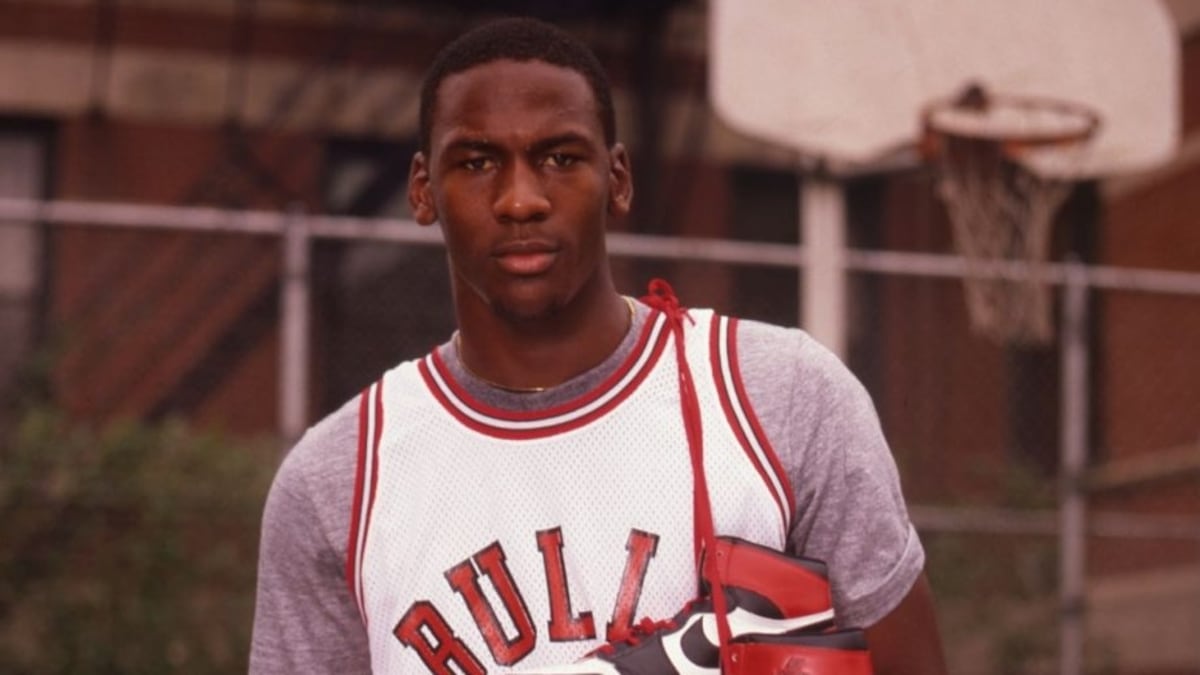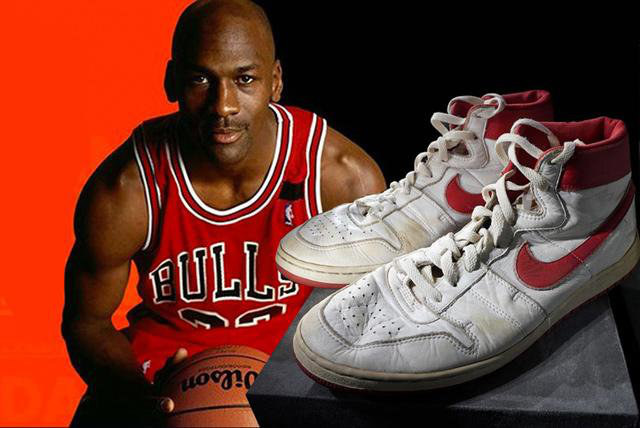Under the direction of Ben Affleck, the latest movie ‘Air’ narrates the journey of the brand’s endeavor to recruit the talented young basketball player, initiating a collaboration that reshaped the trajectory of athletic attire and spawned a multi-billion-dollar sector.

In 1984, Nike found itself in a precarious position. Established in 1964 by athletic trainer Bill Bowerman and his student Phil Knight, the company struggled to boost sales throughout the 1980s, stuck with a reputation solely within technical apparel and lacking presence beyond sports arenas. Meanwhile, competitors like Adidas were seizing opportunities in the emerging urban fashion scene, with the hit song “My Adidas” by rap group Run-D.M.C. showcasing their influence. Converse dominated the NBA shoe market, endorsed by stars like Magic Johnson and Larry Bird. Nike needed a bold move to rejuvenate itself and a recognizable personality to spearhead its transformation. The solution came in the form of a 21-year-old basketball prodigy who had yet to play professionally.
Thus begins “Air,” Ben Affleck’s latest directorial venture. The film chronicles Nike’s negotiations with Michael Jordan, a collaboration that remains one of the most lucrative in sports apparel nearly four decades later. In 2023, the Air Jordan brand raked in $5 billion, accounting for 11.5% of Nike’s annual earnings, while Michael Jordan consistently ranks among the highest-paid athletes annually, despite retiring in 2003. According to a recent study by Sportico, Jordan is the highest-earning athlete in history, with a net worth exceeding $3 billion. Yet, this historic alliance nearly didn’t happen, and Michael Jordan’s mother played a pivotal role in ensuring its fruition.
The courtship’s backstory unfolds in “Air.”During negotiations for his first professional shoe deal, Michael Jordan initially favored Adidas. In 1984, Jordan transitioned from the University of North Carolina to the NBA, entertaining proposals from sports companies alongside his agent, David Falk. Driven by his unwavering belief in his potential, Jordan insisted on having his own exclusive sneaker model—a rarity for rookies at the time. However, Adidas couldn’t meet his demand, and Converse, the NBA’s official shoe brand, seemed hesitant to prioritize a rookie. This created an opportunity for Nike.
Sonny Vaccaro, the executive spearheading Nike’s negotiations with Jordan, discovered the budding star’s potential during the 1982 college basketball championship. Despite initial reluctance from Jordan—who, as portrayed by Matt Damon in “Air,” had little awareness of Nike—Vaccaro persisted, urging Nike to bet big on Jordan. With a $2 million budget allocated for signing young players, Vaccaro convinced Nike to go all-in on Jordan, hoping to secure a meeting at their headquarters by outbidding Adidas and Converse.
:max_bytes(150000):strip_icc():focal(749x0:751x2)/michael-jordan-parents-2-e95cd347d4fc4463b79ec7b0c8ffd975.jpg)
The day before his scheduled meeting with Nike’s top executives, Michael Jordan had second thoughts. He didn’t see the point in flying out to discuss a deal he wasn’t sold on. However, Deloris Jordan, his mother, stepped in and altered the course of both her son’s and Nike’s destiny. “She told me, ‘You’re going to go listen to them. Even if you don’t like it, you’re going to go listen to them,'” Michael Jordan recounted in “The Last Dance.” “After the first meeting, it was clear to me that the way to reach him was through his family. Michael only listened to his family, especially his mother,” recalled Vaccaro.
So, at his mother’s insistence, Michael Jordan arrived at Nike’s Oregon headquarters. A special banner greeted them, reading, “The Nike family welcomes the Jordan family.” Accounts of the meeting depict Jordan as disinterested, but the proposal won over his family. The clincher was Nike’s offer of 5% of annual sales to the player, which would make Jordan the highest-paid athlete of all time. “After the meeting, my father told me I’d have to be crazy not to accept [it]. It was the best deal,” Jordan reflected. Although the decision took a few months, by the fall of that year, just before his NBA debut, the partnership was sealed.
In his inaugural game with the Chicago Bulls, Michael Jordan sported red and white sneakers that fetched $1.47 million at auction years later. The Air Jordan I shoes tailored for him weren’t ready until later that year, hitting the shelves in 1985. By then, No. 23 had become the league’s most promising young player, and his charisma was winning over the public. “Nike’s projections were for $3 million in sales in the first year, but during that time they made $126 million,” explained the player’s former agent, David Falk.
Air Jordans ascended to legendary status, particularly the red and black editions. A popular myth surrounding them claims Jordan was fined $5,000 every time he wore them in a game for violating NBA dress code rules, though this has never been confirmed. The success of Jordan’s sneakers heralded the start of a strategy that Nike still employs today: releasing a new Air Jordan sneaker almost every year. However, in 1988, the Bulls shooting guard, known for his insatiable drive both on and off the court, threatened not to renew his contract with Nike and switch to Adidas. Enter Tinker Hatfield, Nike’s other savior and the architect behind the global phenomenon of Air Jordan fever.

“I wasn’t fully aware of the magnitude of the situation and Michael Jordan’s importance to Nike,” Hatfield reflected in the documentary “Abstract: The Art of Design.” Joining the company in 1981, Hatfield was among its most innovative designers, having previously crafted the iconic Air Max I. Tasked with designing the Air Jordan III—the sneaker meant to convince MJ to stay with the company—Hatfield recalled the pivotal meeting with Jordan. “We had a meeting to present [the sneakers], and it took Michael four hours to show up. He was playing golf with others who were urging him to switch [companies],” Hatfield recounted. “When he finally arrived in a sour mood, he asked, ‘What do you have?'” Despite initial skepticism, the innovative design and materials captured Jordan’s interest. However, Hatfield saved one final surprise: the model was accompanied by a full line of sportswear. “It was like the exclamation point at the end of a sentence.”
This marked the beginning of a triumvirate between Nike, Jordan, and Hatfield, with Hatfield serving as the driving force behind the scenes. “Jordan had the ability to capture the attention of people beyond the sports world, and Tinker found a way to translate that persona into sneakers,” explained DJ and sneaker collector Bobbito Garcia in the documentary. “The brand exploded with Air Jordans III, IV, and V.” Jordan expressed his desire for “basketball shoes that you could wear to a game and then with a tuxedo later that same day.” This concept proved highly successful: the emergence of urban fashion is incomplete without mentioning Air Jordan and the brand’s knack for transforming sporting goods into versatile, everyday wear.